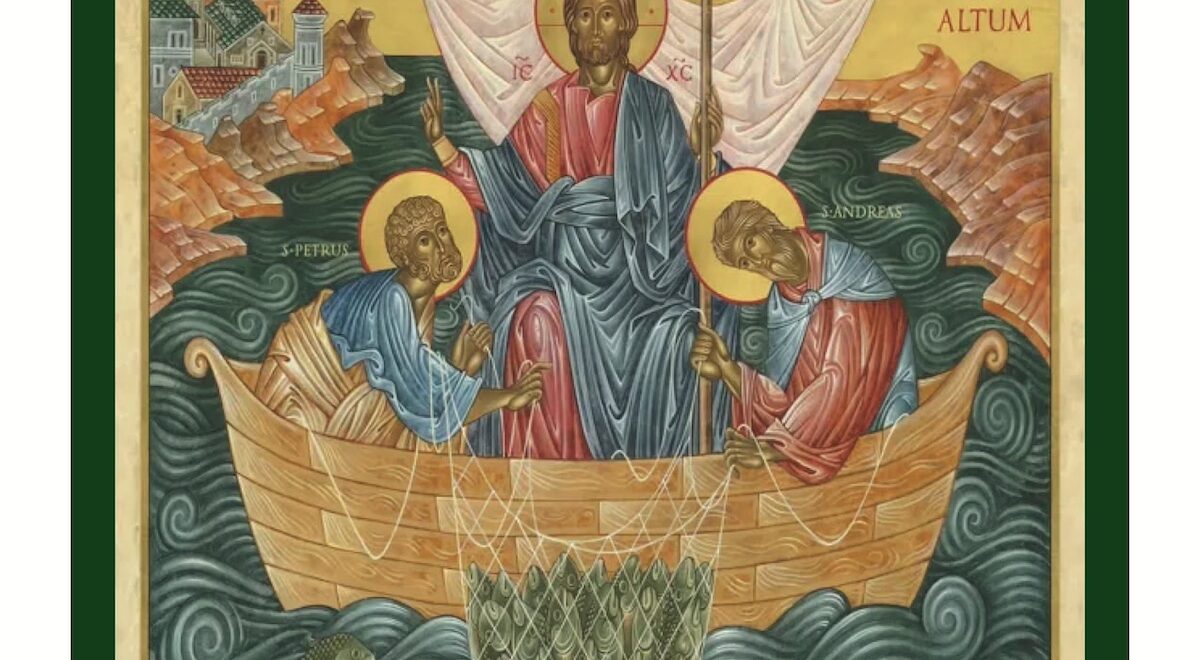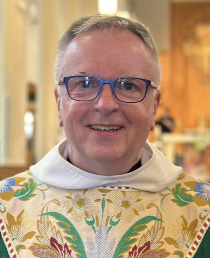
Dear Parishioners and Friends,
Time for another art history lesson! Recently I had the opportunity to get down to New York City just days before the close of an exhibit at the Metropolitan Museum of Art which I had been eager to see: “Siena: The Rise of Painting, 1300-1350.”
It was a beautiful exhibit with lots to see, along with lots of fellow museum patrons! However, the catalog had arrived a few days before my trip, so I had time to acquaint myself with some of the many objects, including small panel paintings, carvings, large altar pieces, devotional objects, liturgical items, manuscripts (!), and textiles. I’d like to share with you some of my favorite items.
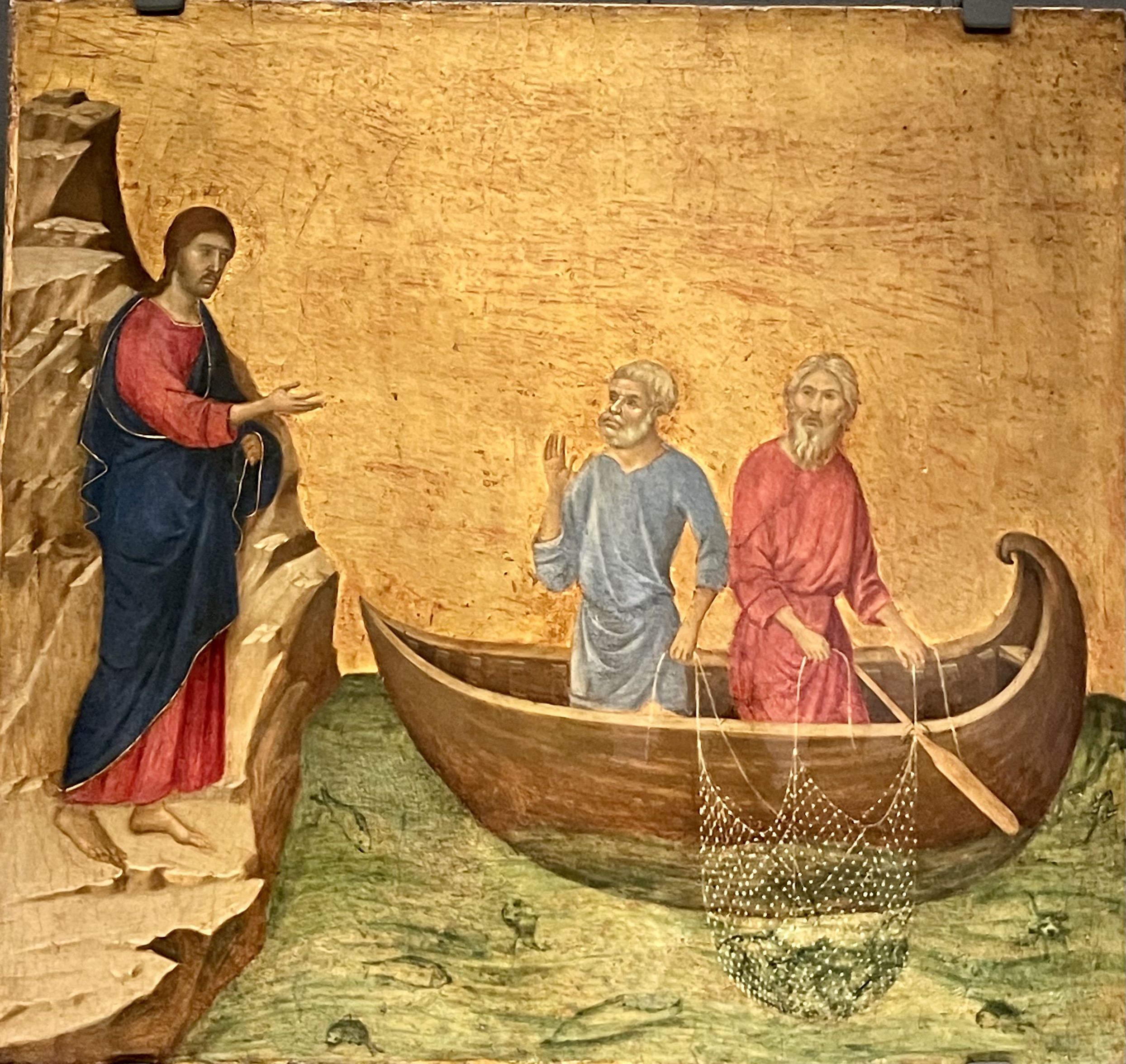
Duccio di Buoninsegna (1278-1319) created a mammoth altar piece in 1308 for the Duomo, or Cathedral, in Siena called the Maestà. It consists of many paintings which illustrate the life of both the Blessed Mother and Jesus Christ. Beginning in the late 1700’s, the Maestà was gradually taken apart with various pieces being sold to museums around the world. Several paintings which formed the praedella, or bottom row of images, were in the exhibition, including the one pictured here: Jesus Calling the Disciples Peter and Andrew, which is featured on the cover of today’s songsheet. Each of the panels are about 2-feet square, and they were mounted on both the front and back of the Maestà. I can only imagine the impression this great work must have made when it was first created.
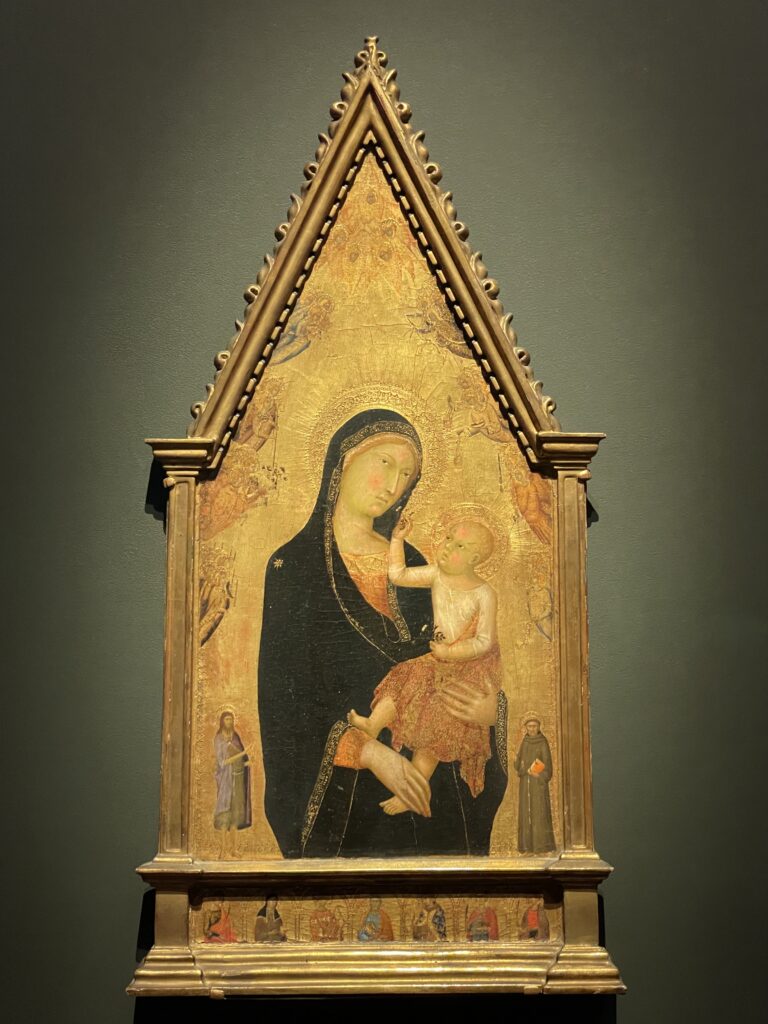
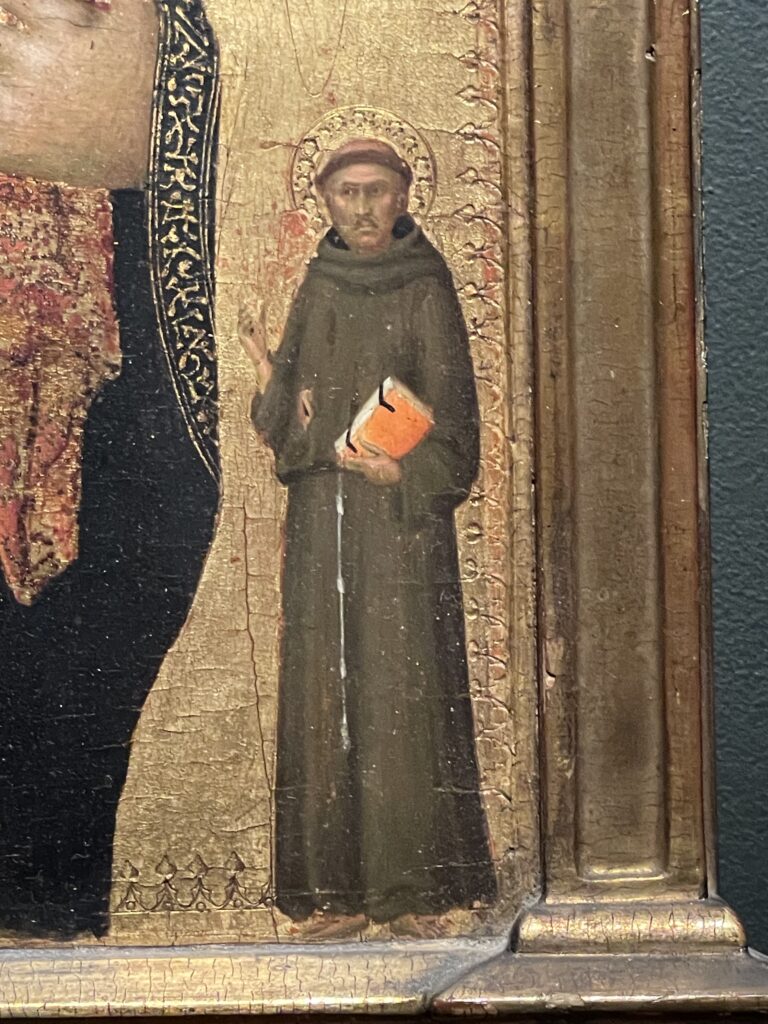
One of the lovely small devotional works in the exhibit was one painted by Lippo Memmi (1317-1350), titled The Virgin and Child with Saints and Angels. Standing approximately 2-feet tall, this work is notable for the inclusion of several Franciscan saints. The figure of the Blessed Virgin Mary is flanked by small images of St. John the Baptist and St. Francis of Assisi. Across the bottom are images of several more saints, including St. Clare of Assisi and the Franciscan bishop, St. Louis of Toulouse.
One final piece, near the end of the exhibit, caught my attention by Jesus’s somewhat insolent pose in Simone Martini’s Christ discovered in the Temple. Martini (c. 1284-1344) was a Sienese native. This work, however, was painted in Avignon in France, where the papal court was in exile from Rome.
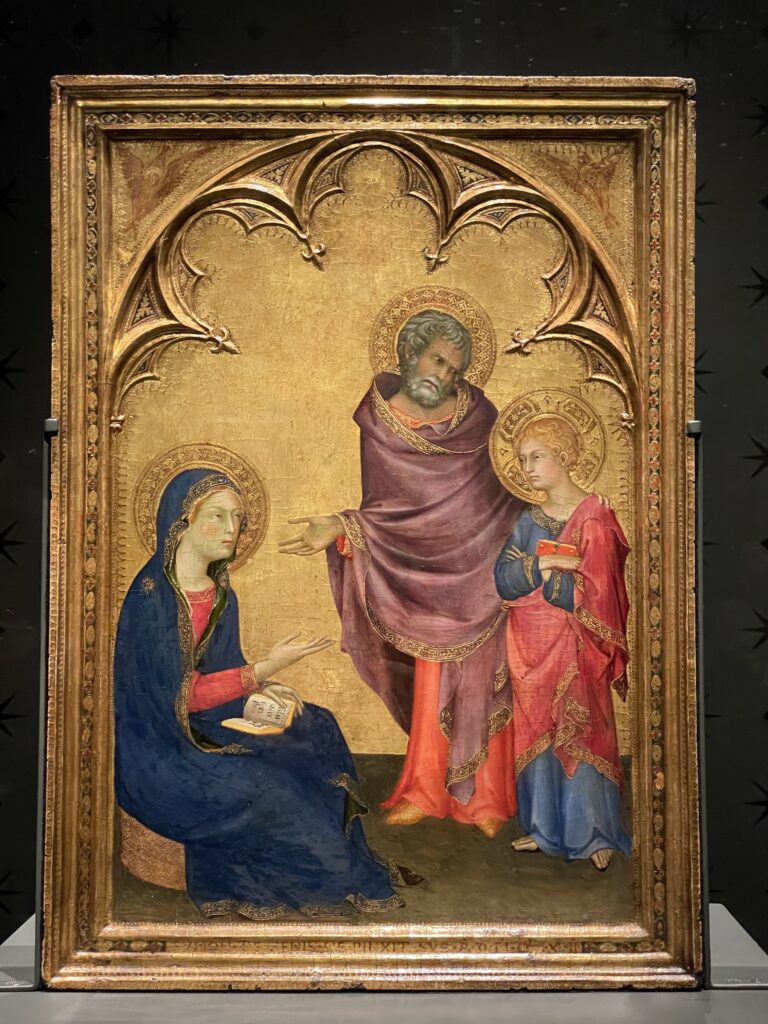
While I was viewing this particular painting, I mentioned to a lady who was standing next to me, “Hm, typical teenager with his arms crossed and a look of defiance on his face.” She responded, “But he has a halo!” I didn’t say anything in response, but the look of anger on Joseph’s face will tell you all you need to know: even the Holy Family had its moments.
I hope you enjoyed this little retrospective of “Siena: The Rise of Painting.” It was a blessing to engage with some of the great artistic achievements of the Middle Ages.
Blessings on your week ahead!
Fr. Tim Shreenan, O.F.M.
Pastor

